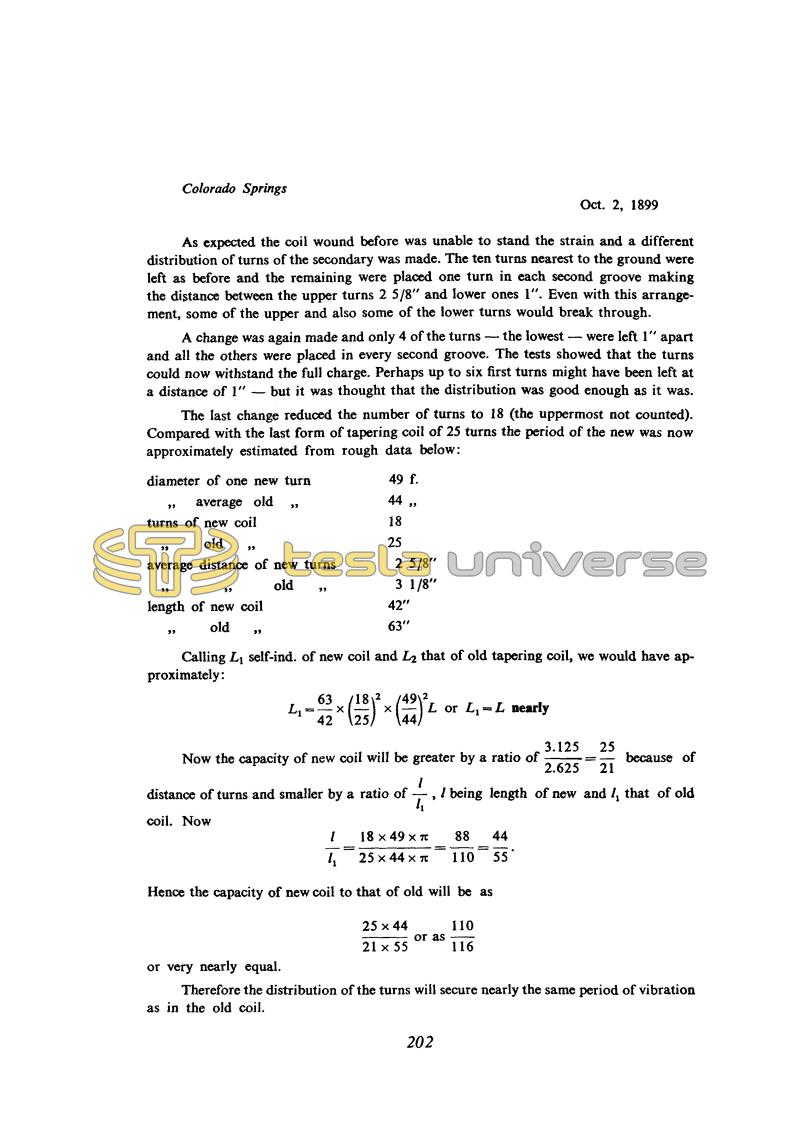
Nikola Tesla Books
Colorado Springs
Oct. 2, 1899
As expected the coil wound before was unable to stand the strain and a different distribution of turns of the secondary was made. The ten turns nearest to the ground were left as before and the remaining were placed one turn in each second groove making the distance between the upper turns 2 5/8" and lower ones 1". Even with this arrangement, some of the upper and also some of the lower turns would break through.
A change was again made and only 4 of the turns - the lowest - were left 1" apart and all the others were placed in every second groove. The tests showed that the turns could now withstand the full charge. Perhaps up to six first turns might have been left at a distance of 1" - but it was thought that the distribution was good enough as it was.
The last change reduced the number of turns to 18 (the uppermost not counted). Compared with the last form of tapering coil of 25 turns the period of the new was now approximately estimated from rough data below:
| diameter of one new turn | 49 f. |
|---|---|
| " average old " | 44" |
| turns of new coil | 18 |
| " old " | 25 |
| average distance of new turns | 2 5/8" |
| " " old " | 3 1/8" |
| length of new coil | 42" |
| " old " | 63" |
Calling L1 self-ind. of new coil and L2 that of old tapering coil, we would have approximately:
!$ {L_{1} = {{63 \over 42} \times {\left({18 \over 25}\right)^{2}} \times {{\left({49 \over 44}\right)^{2}}L}}} !$ or L1 = L nearly
Now the capacity of new coil will be greater by a ratio of !$ {{3.125 \over 2.625} = {25 \over 21}} !$ because of distance of turns and smaller by a ratio of !$ {l \over l_{1}} !$, l being length of new and l1 that of old coil. Now
!$ {{l \over l_{1}} = {{18 \times 49 \times \pi} \over {25 \times 44 \times \pi}} = {88 \over 110} = {44 \over 55}} !$.
Hence the capacity of new coil to that of old will be as
!$ {{25 \times 44} \over {21 \times 55}} !$ or as !$ {110 \over 116} !$
or very nearly equal.
Therefore the distribution of the turns will secure nearly the same period of vibration as in the old coil.
202

